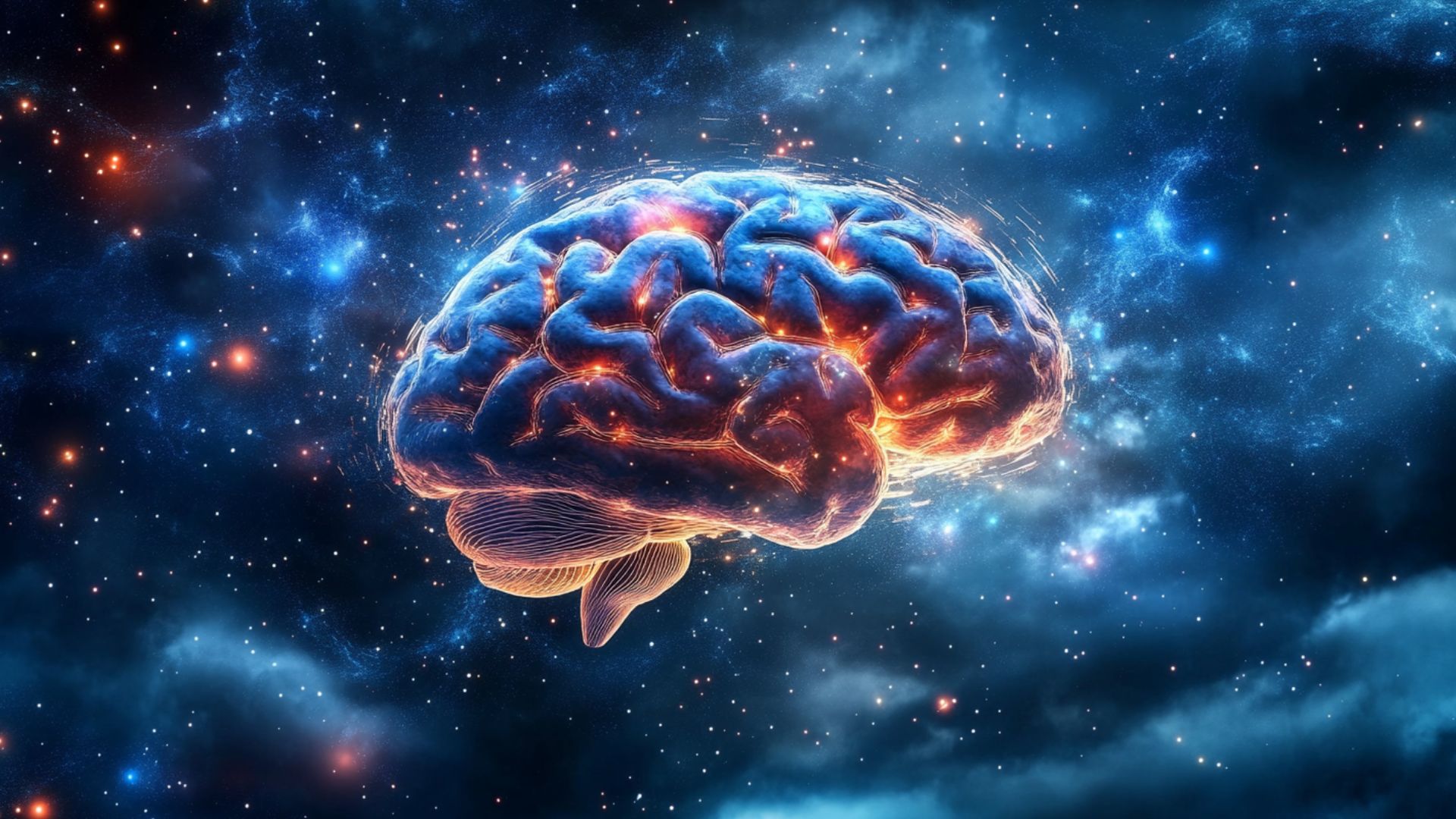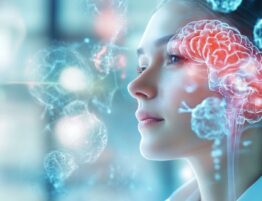Lucid dreaming fundamentally changes brain function. Many people don’t understand how seriously this affects their mental health and cognitive functions.
Imagine a state where your brain operates in two modes simultaneously. During normal sleep, it rests and recovers. With lucid dreams, it’s forced to maintain activity in areas responsible for self-awareness.
Neurophysiologists and psychiatrists study this phenomenon because lucid dreaming brain activity disrupts natural sleep processes. Your brain doesn’t get proper rest, potentially leading to chronic fatigue and concentration problems.
Many consider lucid dreaming harmless entertainment. In reality, it’s serious interference with nervous system function. Without proper understanding of risks, you may harm your health.
Statistics show alarming trends. People practicing lucid dreams regularly are 3 times more likely to suffer chronic insomnia. They develop symptoms similar to sleep deprivation, even with adequate rest duration.
The Neuroscience Behind Lucid Dreams
Neurology of lucid dreams shows a disturbing picture of brain activity. During REM sleep, only certain zones should be active. With lucid dreaming, areas that should rest become engaged.
The prefrontal cortex, responsible for logical thinking, remains partially active. This is unnatural for the sleep phase. Your brain expends energy needed for neural connection restoration.
The dorsolateral prefrontal cortex controls self-awareness in lucid dreams. Usually this area shuts down during the REM phase. Constant activation can lead to neurotransmitter depletion.
MRI studies show abnormal activity in the parietal cortex. This zone handles body perception. Disruptions in its function may cause coordination problems in real life. Neurology of lucid dreams also affects the limbic system. Emotional centers work in altered mode, potentially disrupting natural emotion processing and stress situations.
Neural networks that should consolidate memory during sleep work incorrectly. Instead of strengthening important memories, the brain spends resources maintaining consciousness during sleep.
Doctors note that patients with lucid dreaming experience more frequent complaints of headaches due to prefrontal cortex strain. The brain works overtime when it should rest.
This is especially dangerous for teenagers and young people under 25. At this age, the brain is still forming. Neurology of lucid dreams interference can disrupt natural neural network development.
Brain Waves And Consciousness During Dreams
Brain waves during lucid dreaming fundamentally differ from normal sleep patterns, creating nervous system imbalance.
- Normally, REM sleep is characterized by theta waves at 4-8 Hz frequency. During lucid dreams, gamma waves of 30-100 Hz appear. Such activity is typical of wakefulness.
- Alpha waves 8-12 Hz also intensify during lucid dreams, indicating partial consciousness awakening. Your brain exists in an unnatural state between sleep and wakefulness.
- Beta waves 12-30 Hz activate in areas that should rest, leading to increased glucose consumption by the brain. You may feel exhausted in the morning even after sufficient sleep.
EEG studies show that brain waves during lucid dreaming create chaotic activity patterns. Different brain areas work asynchronously, disrupting natural sleep architecture and potentially causing long-term problems.
Lucid Dreaming And Emotional Processing
Emotional health lucid dreaming connection raises serious concerns among specialists. Emotional processing is disrupted when consciousness interferes with natural sleep processes.
During ordinary dreams, the brain processes daily emotional experiences. The amygdala and hippocampus work in special mode, integrating emotional memories without conscious control participation.
With lucid dreaming, this process is disrupted. The prefrontal cortex tries to control emotional dream content, interfering with natural processing of traumatic experiences and stress.
Emotional health lucid dreaming problems may not manifest immediately. Emotional tension gradually accumulates. You may notice increased anxiety or depressive symptoms.
Neurotransmitter balance is disrupted, especially serotonin and dopamine. These substances regulate mood and emotional stability. Their imbalance leads to psychological problems.
Clinical observations show alarming statistics. Patients with regular lucid dreaming history are 2.5 times more likely to develop anxiety disorders. People with genetic predisposition to depression are especially vulnerable.
Psychotherapists note a particular problem with their patients. Those who practiced lucid dreams are harder to treat. Their emotional reactions became less predictable and more intense.
Cognitive Benefits And Memory Enhancement
Lucid dreaming cognitive effects aren’t always positive, contrary to popular myths. Research shows mixed results regarding cognitive function impact.
Some students try using lucid dreams for learning, hoping to improve memory and creative abilities. However, lucid dreaming memory processes don’t work as people expect.
Memory consolidation requires natural sleep cycles. During deep sleep, information transfers from short-term to long-term memory. Lucid dreaming disrupts this process.
Brain plasticity dreams connection truly exists, but it may work against you. The brain loses the ability to effectively reorganize neural connections during rest.
Studies show people practicing lucid dreams perform worse on memory tests. Their attention concentration decreases during the day. Creative abilities may also suffer.
Lucid dreaming cognitive effects include:
- Working memory deterioration
- Reduced learning ability
- Decision-making problems
- Slow reactions
Some people report temporary creativity improvement, but this occurs at the expense of other cognitive resources. Long-term consequences may be negative.
Lucid dreaming memory formation is also disrupted. Instead of strengthening important memories, the brain creates false or distorted images, potentially affecting your ability to distinguish reality from dreams.
University research shows a sad picture. Students experimenting with lucid dreams showed 15-20% decreased academic performance. Their ability to remember lecture material significantly deteriorated.
Procedural memory – the ability to remember action sequences – especially suffers. Musicians and athletes practicing lucid dreams noted decreased quality of learned skills.
Brain plasticity dream disruptions also negatively affect creativity. Contrary to expectations, artists and writers reported creative blocks after periods of active lucid dreaming.
Risks And Misconceptions Of Lucid Dreaming
Many people underestimate lucid dreaming risks. Popular articles and videos create false impressions about this practice’s safety. In reality, serious dangers exist.
Lucid dreaming brain activity can lead to chronic sleep disorders. Your organism stops distinguishing natural rest phases, causing constant fatigue and reduced immunity.
One major misconception is that lucid dreams improve sleep quality. Research shows the opposite. People practicing this technique more often suffer from insomnia and interrupted sleep.
The risk of developing dissociative disorders increases with frequent lucid dreams. The boundary between sleep and reality blurs, potentially leading to serious psychological problems.
Brain plasticity dreams disruptions accumulate over time. Initially, changes are imperceptible. Gradually, the brain’s ability to recover and adapt deteriorates.
Main risks include:
- Chronic insomnia
- Daytime sleepiness
- Emotional instability
- Concentration problems
- Reality perception disorders
Some people become dependent on lucid dreaming, preferring to spend time sleeping while avoiding real problems. This is a form of escapism that interferes with normal life.
Emotional health lucid dreaming problems can worsen existing mental disorders. People with depression or anxiety are especially vulnerable to negative consequences.
Medical statistics show increased doctor visits. Over the past five years, patients complaining of sleep disorders after lucid dreaming practice increased 4-fold.
Attempts to use lucid dreams to “treat” nightmares are especially dangerous, potentially intensifying traumatic symptoms. Professional PTSD treatment requires different approaches.
Some people develop paranoid states, beginning to doubt the reality of waking events. This is a serious mental disorder requiring medical intervention.
Doctors note increased cases of “false awakening syndrome.” Patients lose the ability to determine if they’ve actually awakened, creating constant stress and anxiety.
Training The Brain Through Dream Practice
If you’ve already encountered problems from lucid dreaming, it’s important to know recovery paths. Neurology of lucid dreams changes are reversible but require time and proper approach.
First step – stop attempting to induce lucid dreams. Give your brain an opportunity to restore natural sleep cycles. This may take several weeks or months.
Restoring brain waves during lucid dreaming patterns requires sleep hygiene compliance. Go to bed and wake up at the same time. Avoid caffeine 6 hours before sleep. Create a dark and cool bedroom environment.
Pre-sleep meditation can help calm the prefrontal cortex. Don’t use techniques aimed at maintaining consciousness during sleep. Focus on relaxation and releasing control.
If emotional health and lucid dreaming problems are serious, consult a specialist. A psychotherapist will help work through emotional disorders. Sometimes medication support is required.
Recovery techniques include:
- Progressive muscle relaxation
- Breathing exercises
- Cognitive-behavioral therapy for sleep
- Regular physical activity (but not before sleep)
Lucid dreaming cognitive effects can be reversed through neuroplasticity. The brain can restore normal functions with proper approach, but this requires patience and consistency.
Understanding that recovery is a process is important. Don’t expect instant results. Brain plasticity dream mechanisms work slowly but effectively with proper approach.
Clinical experience shows complete recovery takes 3 to 12 months. Young brains recover faster, but people over 40 may face a longer process.
Working with a psychologist or psychiatrist is especially important. Many patients underestimate emotional consequences. A specialist will help restore healthy sleep and emotional regulation patterns.
Some patients require medication support. Melatonin or mild sleeping pills can help restore natural sleep cycles, but should only be taken under medical supervision.
Group therapy also shows good results. People with similar problems support each other during recovery. This is especially important for overcoming lucid dreaming dependency.
Lucid dreaming memory restoration requires special exercises. Working with a neuropsychologist will help return normal memorization and learning ability.
If you have sleep disorder symptoms or emotional problems after lucid dreaming practice, don’t delay seeing a doctor. Early intervention prevents serious health consequences.
Remember: your brain needs natural sleep for normal functioning. Don’t experiment with lucid dreaming without understanding the risks. Consult a specialist if you’ve already encountered problems.












Please, leave your review
Write a comment: